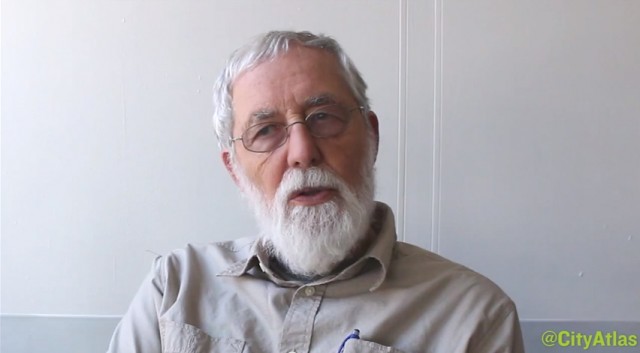 Columbia University geophysicist Klaus Jacob is both a member of the New York Panel on Climate Change, and a voice for even deeper long range planning by the city. The city’s Special Initiative on Rebuilding and Resilience (SIRR) report is based on projections up to 2050; Jacob believes the city should plan into the next century.
Columbia University geophysicist Klaus Jacob is both a member of the New York Panel on Climate Change, and a voice for even deeper long range planning by the city. The city’s Special Initiative on Rebuilding and Resilience (SIRR) report is based on projections up to 2050; Jacob believes the city should plan into the next century.
Seth Pinsky, the leader of the report team, spoke at a Q and A hosted by the Municipal Art Society on June 19 and gave two crucial reasons the planners felt 2050 was the useful limit for the report. For one, climate predictions for more distant decades include a much wider range of possibilities, so it would have been impossible to address the full scope of effects. Another constraint is that some possible climate effects become so large in the distant future that trying to fund and organize a response in the present would be impossible.
As we’ve noted earlier in City Atlas, Jacob is outspoken about future flood risks from inexorable sea level rise. In an exclusive interview with City Atlas following the Municipal Art Society event, Jacob elaborated on his views, while supporting the aims of the SIRR in taking a proactive stance on protecting the city. The central point of Jacob’s objection is the question of time and infrastructure; if one considers the following hundred years, to 2150, concerns about sea level rise become paramount.
2150 — 137 years in the future — seems remote, until one remembers that much of the New York’s current infrastructure comes from an equally remote past: the Brooklyn Bridge, the development of the water system, and many of New York’s greatest buildings.
And the five boroughs are today full of children and newborns (about 120,000 babies are born in the city each year), most of whom will live many decades past the planning covered in the SIRR.
And so any new planning for infrastructure needs to think that far ahead to pass along a successful city, in Jacob’s view. “We have bridges and subway systems that are a hundred years old. We shouldn’t create anything now that in a hundred years is a new liability.”
Jacob’s answers to our questions follow:
How should NYC protect itself against future flood risks? Should we let concerns about the future reshape our city? Share your ideas on our Facebook or Twitter.
1 Comment
Comments are closed.